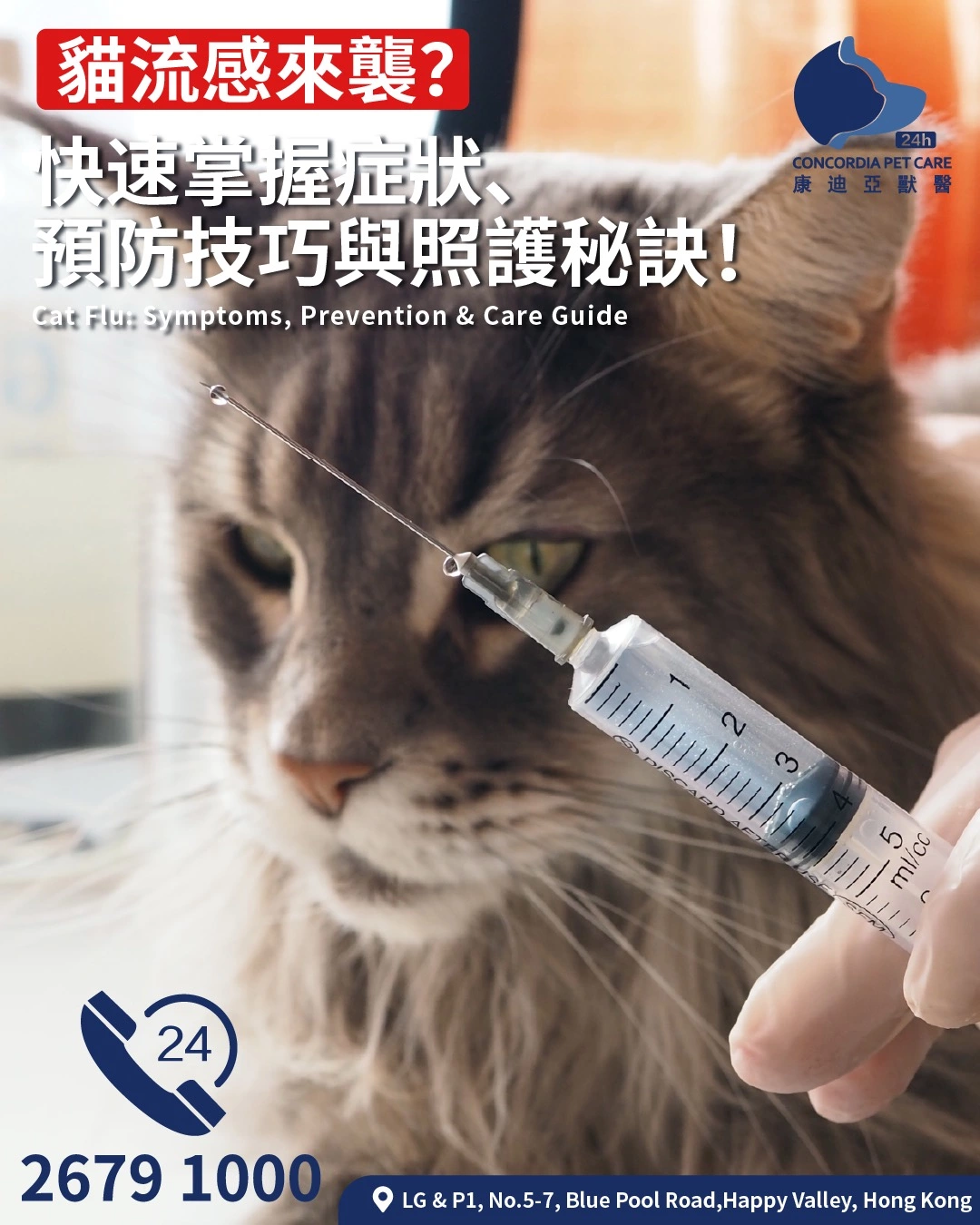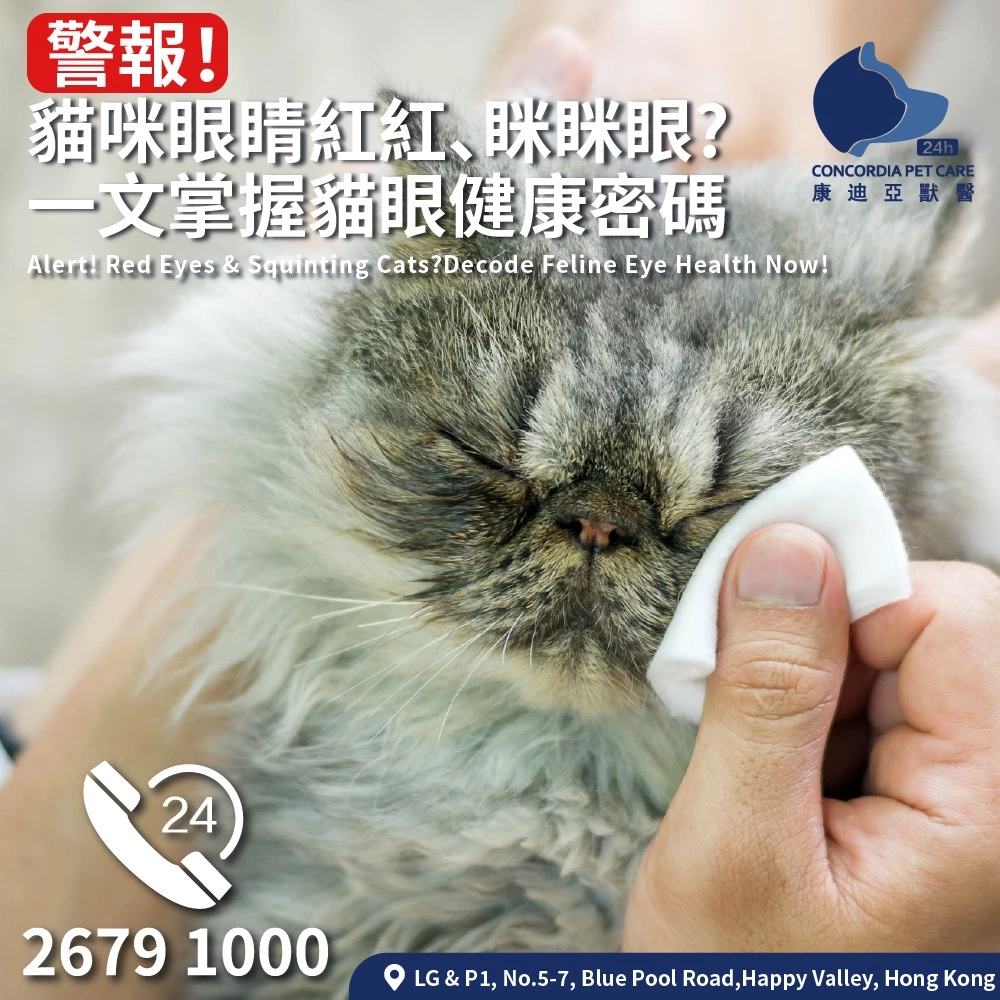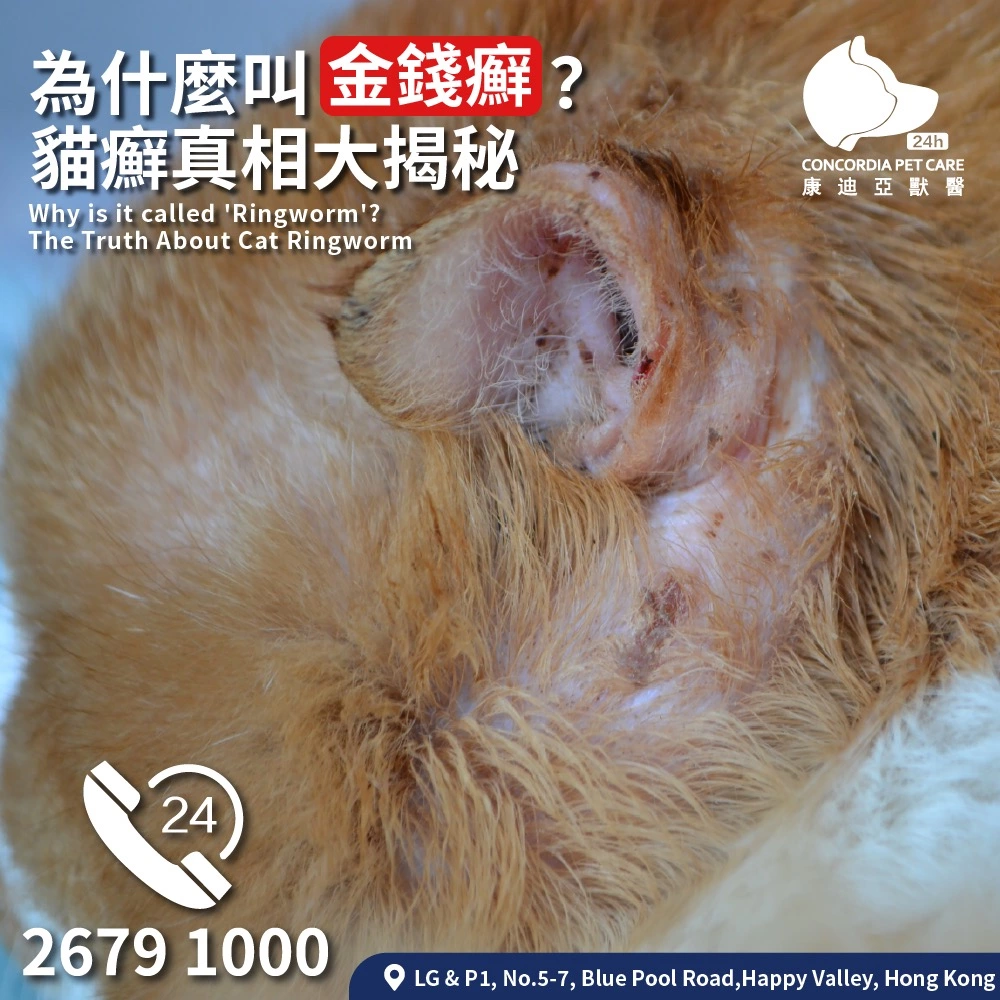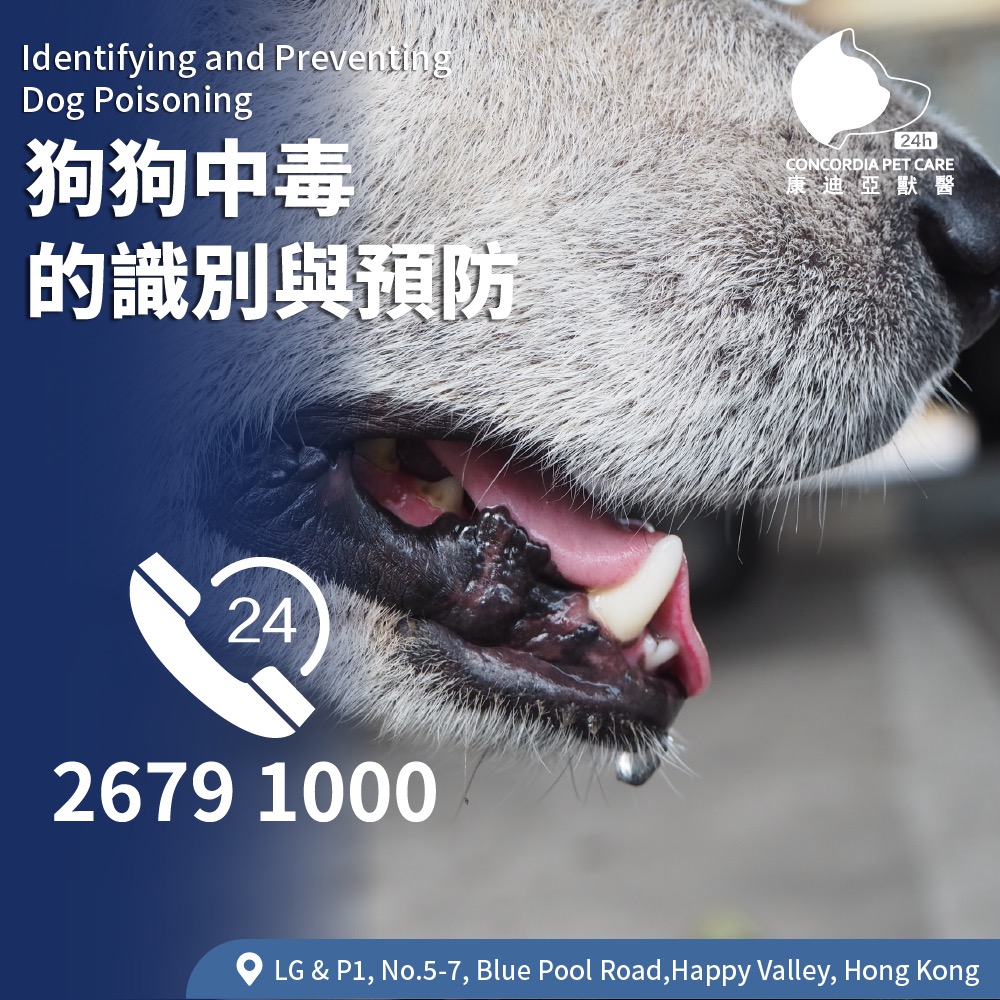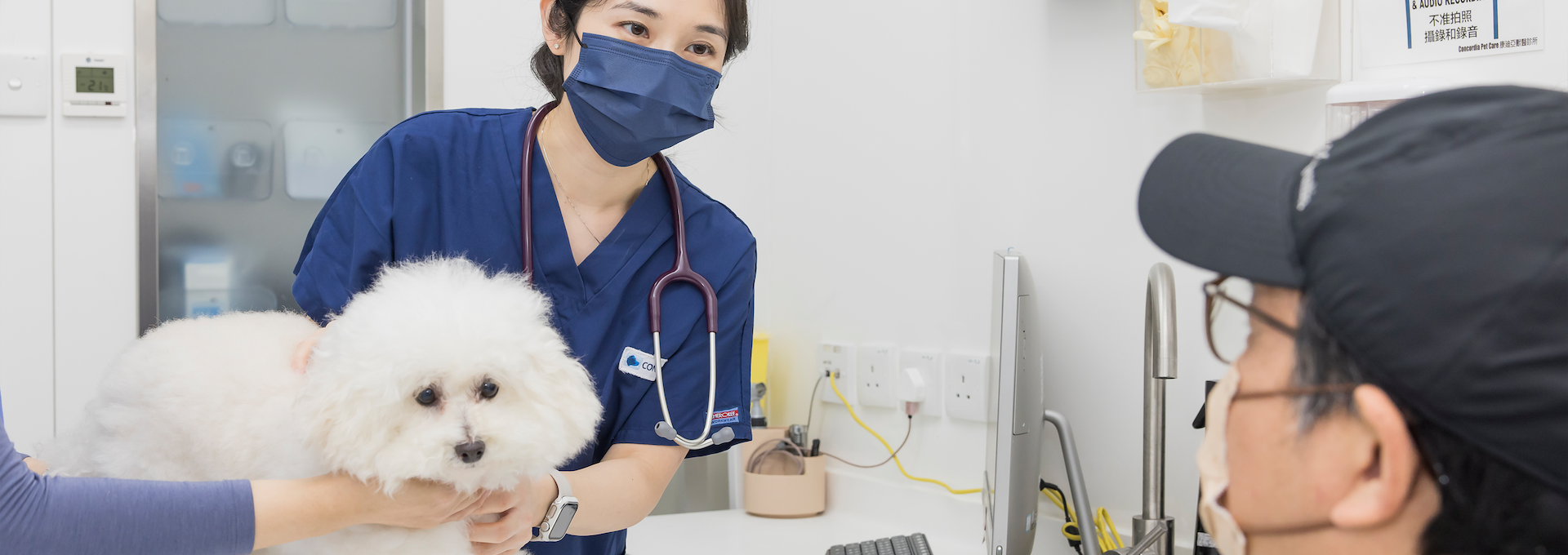
Cat Flu: Symptoms, Prevention & Care Guide|Concordia Pet Care
 Concordia Pet Care
Concordia Pet Care
 2025-03-03
2025-03-03


A Guide to Cat Influenza: What Every Cat Owner Should Know
Owning a cat is both a joy and a responsibility. Just as with any pet, keeping a cat in good health ensures them a long, happy life. Preventative care, timely vaccinations, and regular check-ups all contribute to this goal and help prevent common feline illnesses.
One of the more serious health issues cats face is feline flu, also known as cat influenza. This contagious respiratory illness affects cats of all ages, but young kittens, elderly cats, and those with weakened immune systems are particularly vulnerable. Recognizing cat flu symptoms early and knowing how to manage and prevent this illness can make a world of difference, as early identification leads to more effective management and quicker recovery.
What is Cat Flu?
Cat flu is a viral respiratory infection primarily caused by two viruses: the feline herpesvirus (FHV) and the feline calicivirus (FCV). These viruses can cause a range of respiratory symptoms and are especially common in areas where many cats live in close quarters, such as shelters and multi-cat homes.
Here’s a breakdown of the most common causes of cat flu:
●Feline herpesvirus (FHV): This virus can lead to severe respiratory symptoms, including nasal discharge and conjunctivitis. It tends to linger in a cat’s body, potentially causing recurring episodes.
●Feline calicivirus (FCV): Calicivirus may cause similar respiratory symptoms and can also result in painful ulcers in the mouth. It’s highly contagious and can easily spread from one cat to another.
●Weakened Immune System: Cats with compromised immune systems, often due to age or stress, are more susceptible to cat flu.
●High-Stress Environments: Environments where cats experience high stress, like shelters, can increase the risk of cat flu.
●Close Living Conditions: Cats living in multi-cat households or crowded environments are at higher risk, as close contact facilitates the spread of these viruses.
Symptoms of Cat Flu
Spotting cat flu symptoms early is crucial for effective management, as early intervention can reduce the severity of symptoms and speed up recovery. Some common symptoms to look out for include:
●Persistent sneezing
●Nasal discharge, which may appear clear, yellow, or green
●Watery eyes, often accompanied by inflammation or discharge
●Fever or elevated body temperature
●Loss of appetite, which can lead to weight loss and dehydration
●Lethargy or lack of energy
●Dehydration from reduced food and water intake, especially risky for kittens
When to Contact a Veterinarian
If you notice symptoms like difficulty breathing, coughing, nasal congestion, severe lethargy, or persistent eye discharge or squinting eyes, please reach out to your veterinarian. They can provide professional guidance and, if necessary, begin medical treatment to help your cat recover from cat flu.
Treatment Options for Cat Flu
While there is no complete cure for viral infections like cat flu, managing symptoms effectively and following your veterinarian’s guidance can significantly improve your cat’s recovery.
Below are some veterinary treatments and supportive care options you can consider to help your cat feel more comfortable and recover faster.
Standard Veterinary Treatments
●Antiviral Medications: In some cases, antiviral medication may be prescribed to reduce the severity of symptoms, especially for infections caused by feline herpesvirus (FHV).
●Antibiotics: While antibiotics don’t work against viruses, however some medications are frequently used to treat secondary bacterial infections that often accompany cat flu.
●Supportive Care: Fluids are given to prevent dehydration. For symptom relief, veterinarians may use anti-inflammatories for pain, decongestants for nasal congestion, and antiviral or lubricating eye drops for eye infections or irritation.
Cat Flu Treatment at Home
In addition to veterinary care, there are several ways you can provide supportive cat flu treatment at home:
●Humidifier: A humidifier can help ease respiratory symptoms by keeping airways moist.
●Eye Cleaning: Use a warm, damp cloth to wipe away any eye discharge gently.
●Hydration: Provide fresh water and, if necessary, encourage fluid intake through wet food to ensure your cat stays hydrated.
●Comfortable Environment: Create a warm, quiet area for your cat to rest and recover without stress or interruption.
Remember, home care is supportive and should not replace professional treatment for cat influenza. For serious symptoms, always consult your veterinarian.
Prevention Tips for Cat Flu
Preventing cat flu not only helps keep your cat healthier but also minimizes the need for treatment and potential vet visits. Take note of these practical tips to help keep your cat flu-free:
Vaccinate Regularly
Vaccinations are one of the best defenses against feline flu. Make sure your cat receives their core vaccines on time to protect against both FHV and FCV.
Visit the Veterinarian Routinely
Regular vet visits can catch early signs of cat flu and keep your cat’s immune system strong.
Minimize Exposure to Infected Cats
Avoid contact with sick cats, especially in multi-cat households or places like boarding facilities. Isolation is key to preventing the spread.
Maintain Clean Environments
Regularly clean your cat’s bedding, litter boxes, and feeding areas to reduce exposure to germs.
Reduce Stress Levels
Stress can weaken your cat’s immune system. Keep routines consistent, provide enrichment activities, and give your cat a calm environment.
Protect Your Cat from Feline Flu
Being aware of cat flu symptoms and having a plan for treatment and prevention are essential parts of responsible cat ownership. Recognizing the signs early, supporting recovery, and implementing preventive measures can go a long way in ensuring your cat’s health and happiness.
If you’re looking for expert guidance and personalized advice, Concordia Pet Care is here to help. We offer comprehensive care and solutions tailored to your cat’s unique health needs, supporting you every step of the way in keeping your beloved feline companion safe and well. Get in touch with us today to learn more about the best ways to protect your cat’s health.
